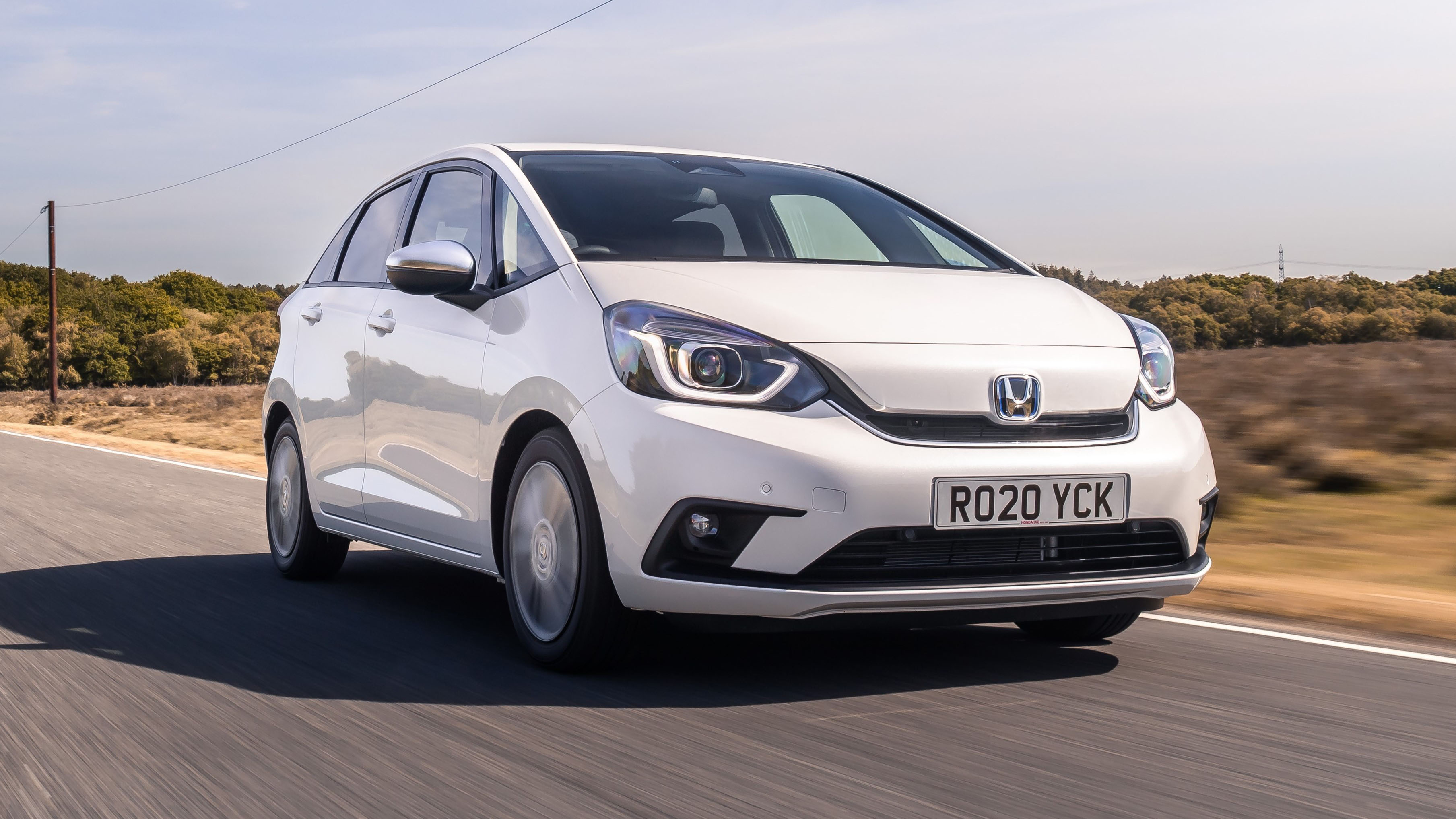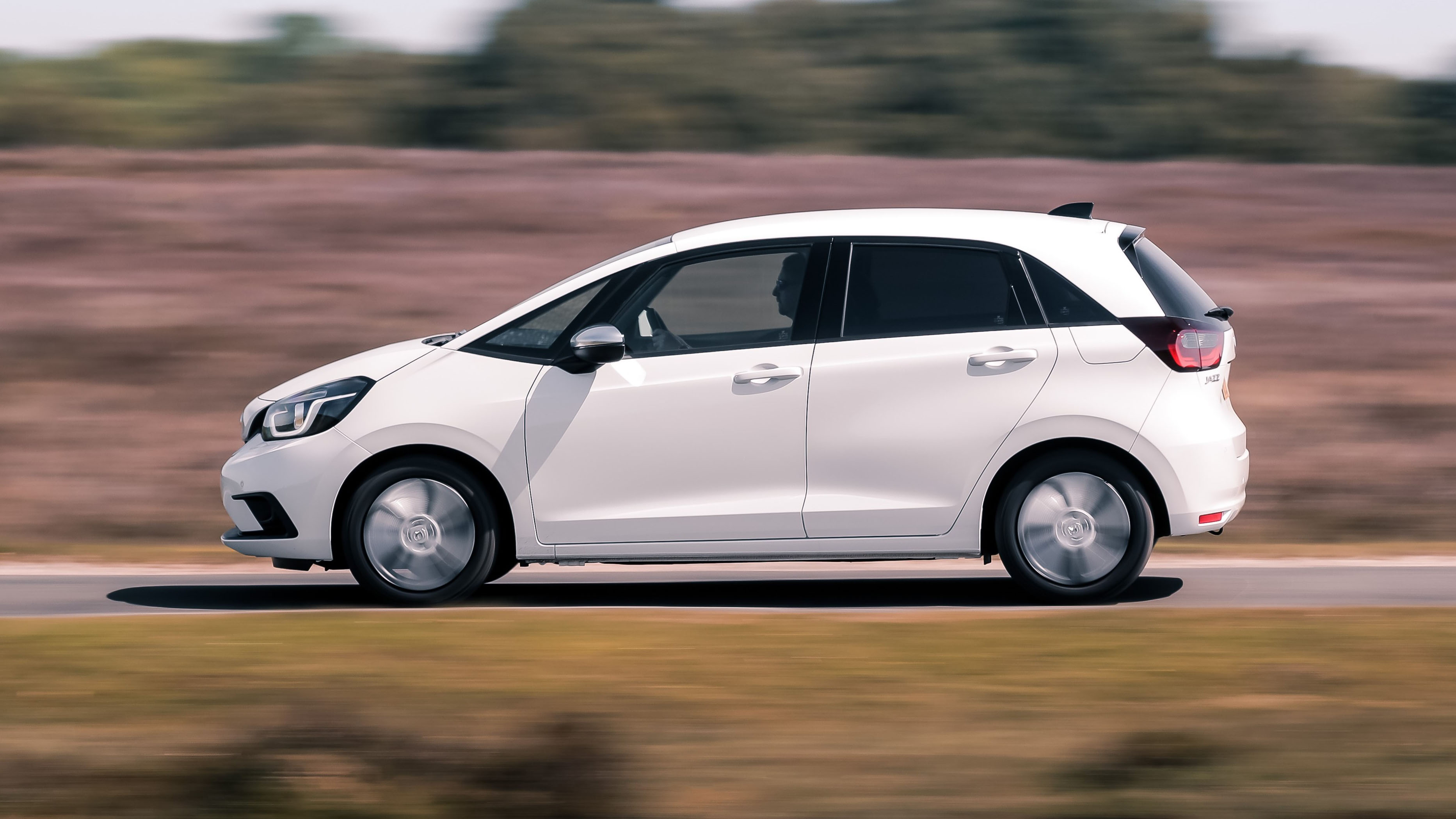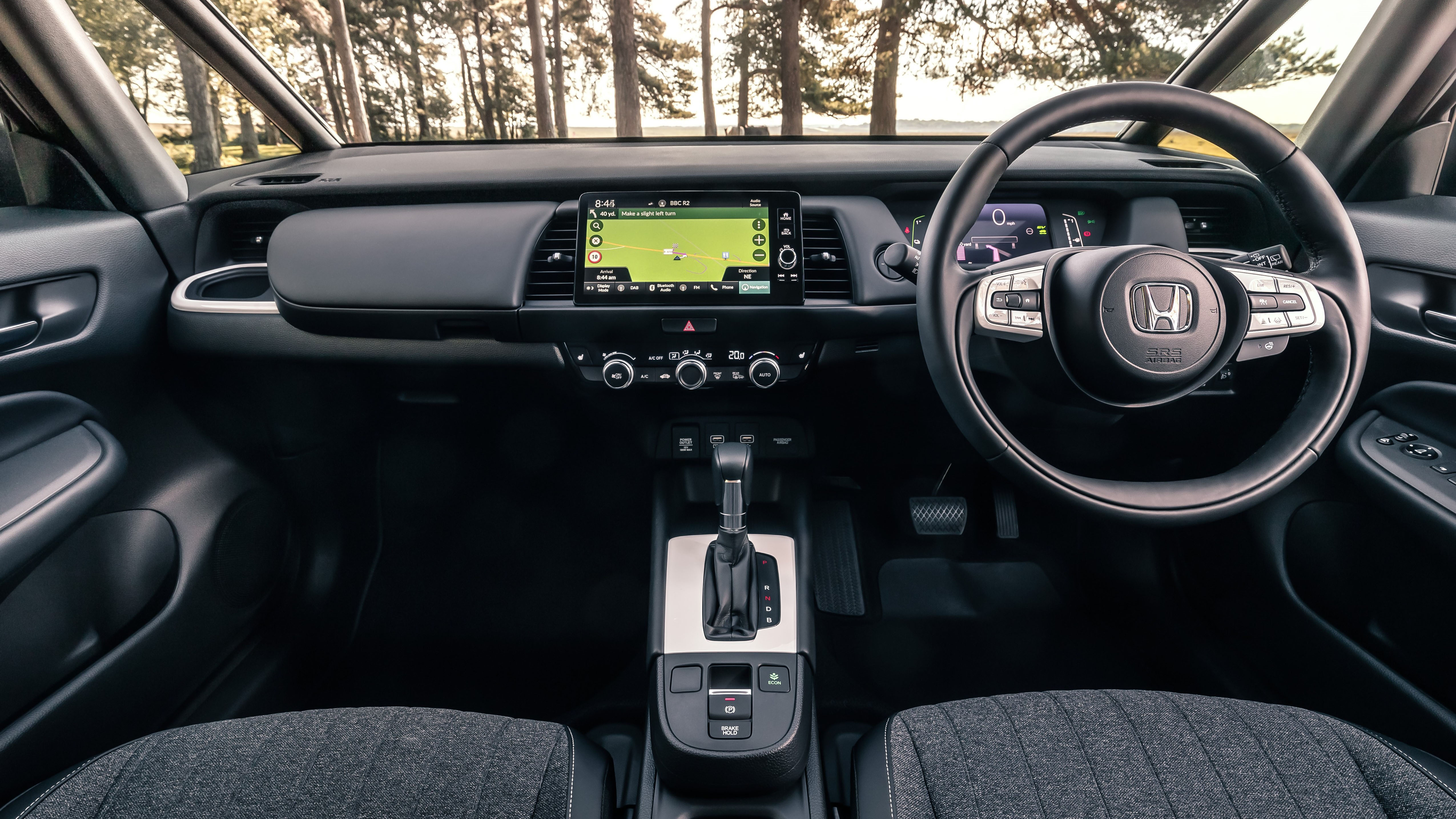
Driving
What is it like to drive?
The hybrid driving experience is by no means EV-like in the Jazz, but it does help smooth some of the worst excesses of the petrol engine. Around town the engine will be switched off a lot of the time simply because you'll spend so much time sitting around or gliding along at lower speeds.
Is it noisy?
Starting and stopping at low speed is heard but never felt. As speed varies, it aims for either efficient revs, or to be off altogether. In a flat-out acceleration run to motorway speed, its revs rise and fall a bit as if through a multi-speed gearbox, but that's just a bit of management trickery to give a sense of acceleration. The engine will cut out at motorway speeds on a level road, which is impressive.
Through corners or roundabouts, the revs see-saw drunkenly. Anyway, whenever the engine is working hard it's a bit of a rattly drone. And it doesn't have the instant response of an EV. It is not, then, a powertrain from which you can expect to extract fun.
But do you have to drive it like your granny?
The driving experience is surprisingly well tuned for town – acceleration isn't bad for a petrol car that’s so economical, with a 0–62mph time in the mid-nines. Progress is perky rather than sluggish, and certainly better than the engine's 97bhp would imply, because the battery is shoving in some help.
Of course, the Jazz will encourage your right foot to treat things gently, the same applies to your cornering. It feels like a tall car, rolling onto its rear, and is guided by rather blurry steering. Strangely, the even taller Crosstar is nicer, its steering response and roll rate more harmonious.
The Crosstar also has a marginally softer ride; the basic Jazz can get fidgety, with a deficiency of mid-frequency damping that makes the chassis feel twangy.
We’ve got no complaints about the brakes, which are more progressive than in many hybrids we’ve driven.
Featured

Trending this week
- Top Gear's Top 9
Here are nine very optimistically-named caravans






